
Review of CatLABS ‘x film 80’ sheet film by David Tatnall.
CatLABS is a US film camera equipment store and distributor, in 2019 they introduced their own brand of black & white negative film: x film 80. Their website says it’s a traditional, slow speed film along the lines of Kodak’s Panatomic-X, with a high silver content, very fine grain, modest contrast and deep tonal range.
The film is ISO 80 and can be push processed to ISO 800. It exhibits wide exposure latitude under various lighting conditions and has flexibility in processing options. It is available in 4×5 and 8×10 sheet film sizes and 120 roll film. x film 80 is made in China for CatLABS.
For this review I processed the film in developers I use regularly using the developing times CatLABS recommends. All the photographs have been made outside in daylight. I made some photographs on Kodak’s Tmax 100 as a comparison (Figure 3).
I processed the 4×5 film in trays using a water bath first. Work prints have been made from the negatives and scanned for this review.
The film is packaged in a two section cardboard box with the film inside a plastic bag inside a foil satchel. It has a simple U shaped notch to indicate the emulsion side. Each sheet of film is interleaved with a sheet of paper. There is no information about processing or reciprocity on the box.

CatLABS has processing instructions on their website:
D-76 /IDII
ISO 80
stock – 9.30 minutes
1 + 1 – 15 minutes
ISO 320
Stock – 15 minutes
ISO 800
1 + 1 – 21 minutes
Rodinal
ISO 50
1 + 25 – 6.30 minutes
ISO 80
1 + 25 – 10 minutes
ISO 80
1 + 50 – 15 minutes
Pyrocat HD
1 + 1 + 50 – 7 minutes
I tested the film in ID11, Rodinal and Pyrocat HD developers at ISO 80 and ISO 800 using the above times as a starting point.
Figure 2. Detail of River red gum trunk. x film 80 rated at ISO 80. This photograph was made on a bright overcast day. Figure 3. Is the same image photographed with T Max 100 to show the difference in tonality. Both films have been processed in IDII 1 + 1, x film 80 for 15 minutes and T Max 100 for 13 minutes.
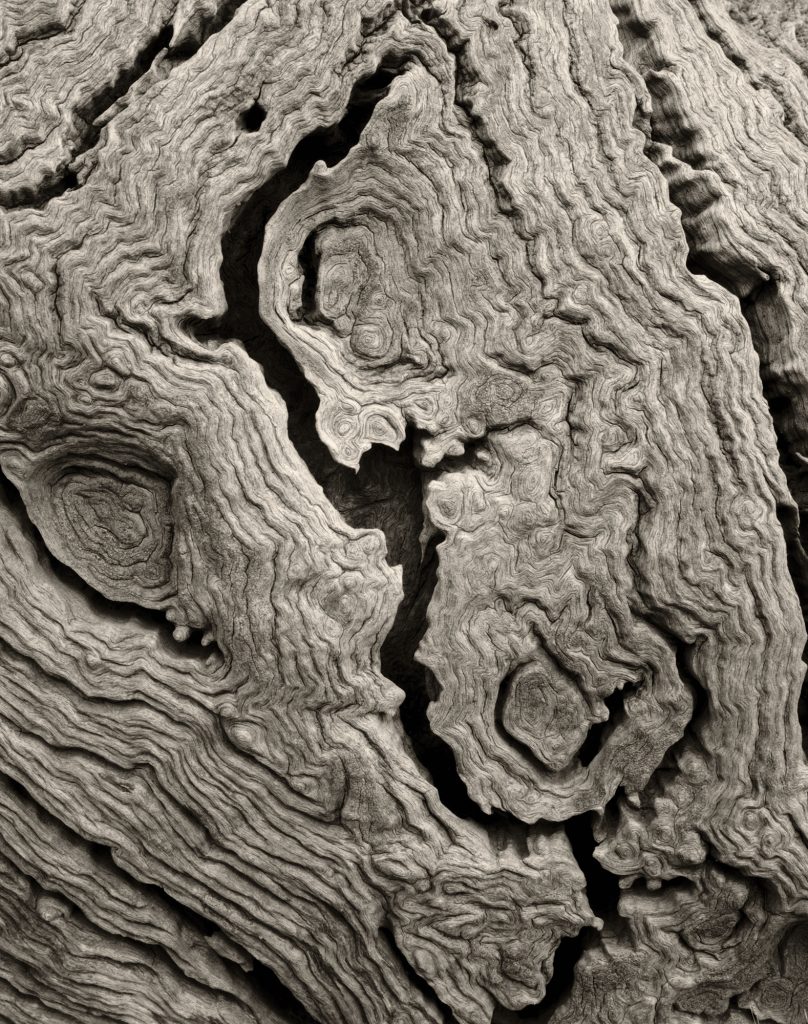

Figure 4. Grassy woodlands. x film 80. Made on a very bright sunny day this photograph of native grasses and eucalypt trees is a good example of the film’s wide tonal range, from very dark shadow on the basalt rock on the bottom right to near total white on the sunlight grasses middle right.
Both areas have retained detail. This negative was processed in Rodinal 1 + 25 for 10 minutes. Rated at ISO 80.
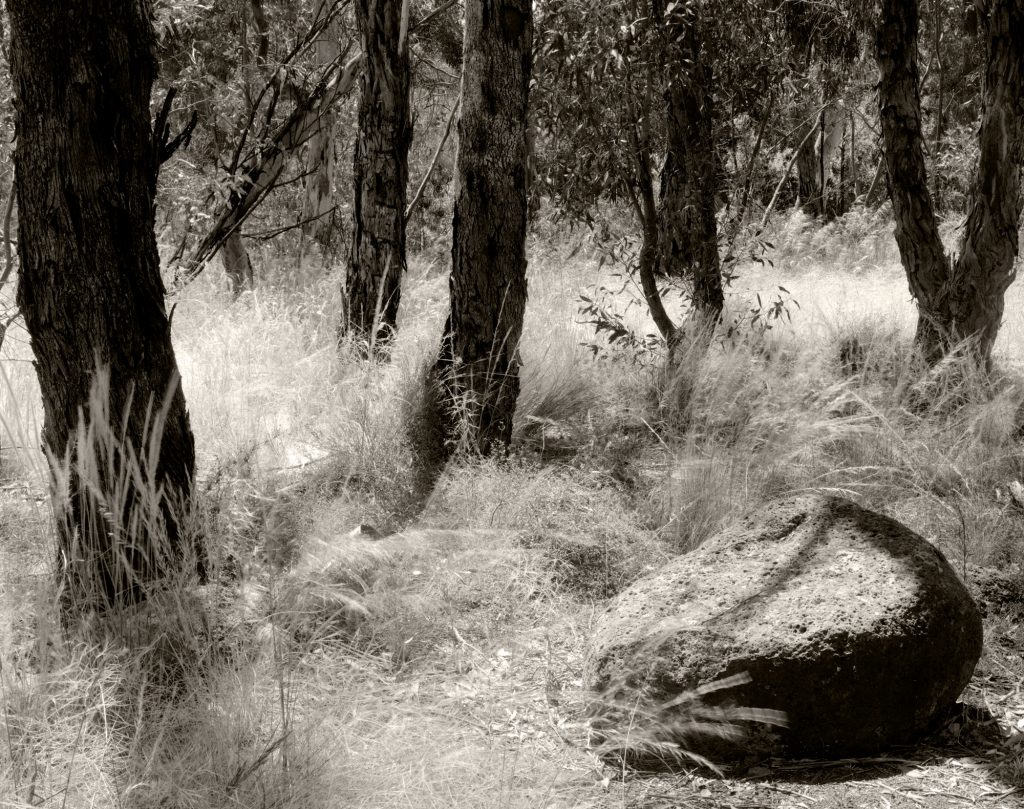
There is no information about film reciprocity failure compensation for x film 80 on CatLABS website. I contacted them and they suggested using Ilford’s FP4+ reciprocity data as a staring point. Figure 5. Darebin Creek. This photograph was metered at 3 seconds and adjusted to 5 seconds using FP4+ data. The result was successful, producing a correctly exposed and easily printable negative.
Rated at ISO 80 this negative was processed in ID11 1 + 1 for 15 minutes.
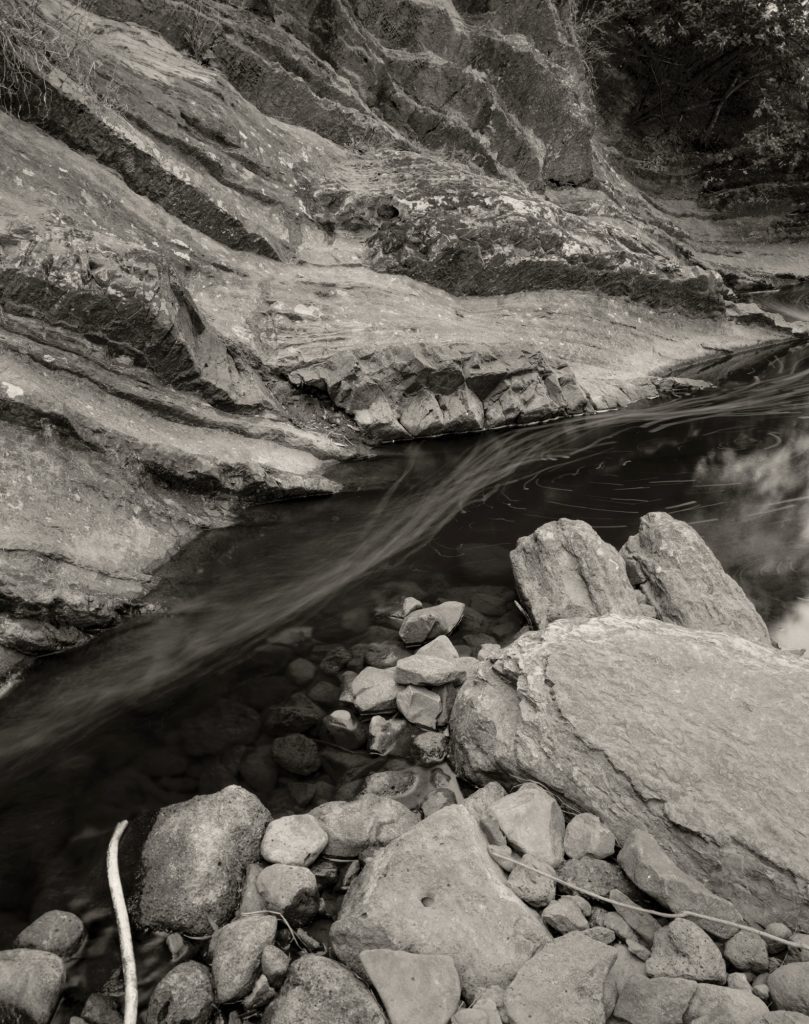
Figure 6. Portrait of artist Victoria Bilogan. This photograph was made on a bright and overcast day using an orange filter. It was rated at ISO 800 and push processed in ID11 1 + 1 for 21 minutes. Doing this again I would probably alter the processing time slightly as the dark jacket is a little too blocked, but for push processing an ISO 80 film to ISO 800 it’s quite impressive.
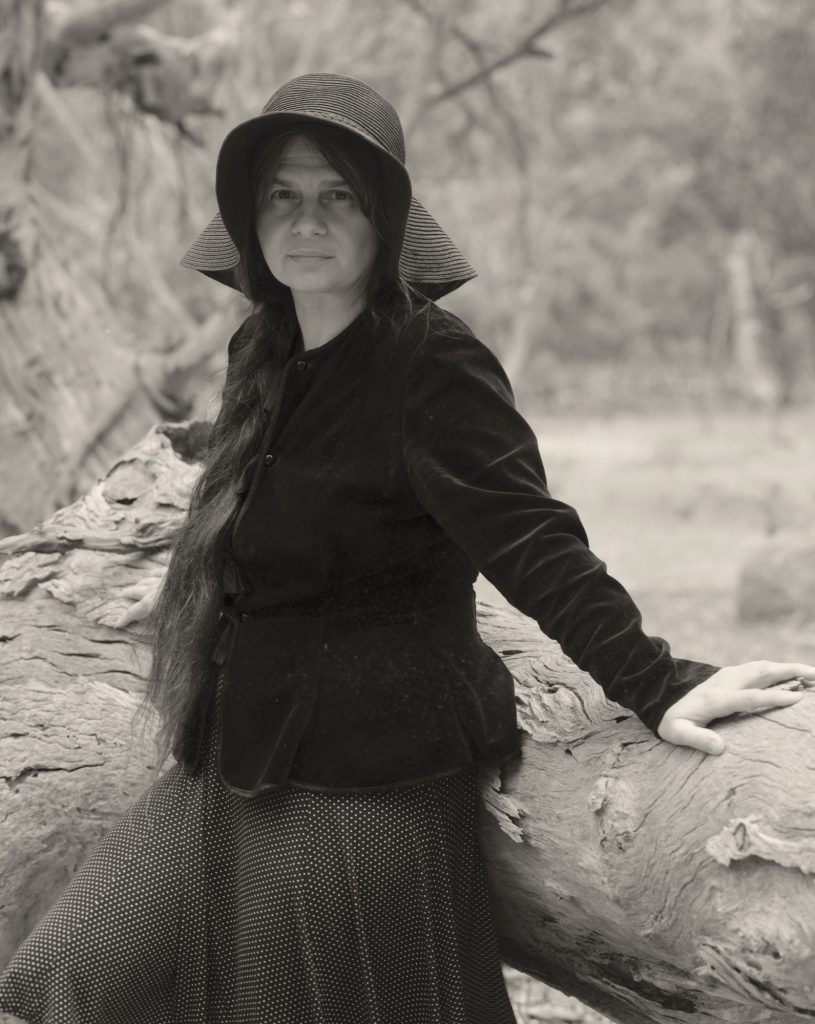
Figure 7 (below). Darebin Creek two was made on a bright sunny day. The top right of the image is in sunlight and rest of the image is in shadow from the rock face. The exposure was 4 seconds adjusted to 8 seconds for reciprocity. It was processed in Pyrocat HD 1 + 1 + 50 for 7 minutes. This sort of light is a tough test for any film. However the x film 80 produced a good negative and print.
Figure 8 (below). Tomahawk Creek was made on a sunny day with this scene still in shadow from the hillside. Exposure was 4 seconds adjusted to 8 seconds for reciprocity. Yellow filter. Processed in ID11 1 + 1 for 15 minutes. The print has good tonality and has retained detail in the sunlit water middle left and in the gap between the boulders on the bottom right.
Figure 9 (below). Portrait of artist Richard Collins was made on a sunny day in pale shade using an orange filter. Processed in ID11 1 + 1 for 15 minutes. The skin tone is very pleasing. There is almost pure white in the white mark on the tree trunk and almost pure black in the folds of the jacket.



Conclusions.
This film does have a very good tonal range it responds very well to different developers and can easily be fine tuned to produce excellent prints. I prefered it when using ID11 at 1 + 1 ratio. I did experiment with different dilutions with all developers, the examples shown produced the best prints.
Using the film reciprocity failure compensation data for Ilford’s FP4+ worked very well for the times I used it, but it was beyond the scope of this review to test with very long exposures.
Push processing the film to ISO 800 produced a surprisingly good result. I wasn’t expecting the tonality of the ISO 80 film to be present when pushed to ISO 800. CatLABS do say on their web site results can be unpredictable at this ISO, I’m sure with some fine-tuning a very good negative could be produced.
The film is certainly moderate contrast and I would say fine grain, not very fine grain as CatLABS say on their website. The prints I made from this film show good tonality. The negatives scan well too.
The film is also available in 120 roll film, and I tested it using ID11 at 1 + 1 for 15 minutes. Also producing very good results. One unusual feature of the roll film is there is no numbering or branding on the film edge at all. It has a very clear base.

Photographers using cameras with red windows to see the film numbers will be pleased as the backing paper is black with white numbers that are much easier to see through the red window than black numbers on light paper.

I was pleased with the results I achieved with this film. Although I produced good negatives using the times CatLABS recommend, continuing to use this film I would fine tune developing times.
x film 80 is available directly from CatLABS in the US, 8×10 and 4×5 sheet film formats are not currently available in Australia. Walkens House of Film in Melbourne however stock x film 80 in 120 roll film size.
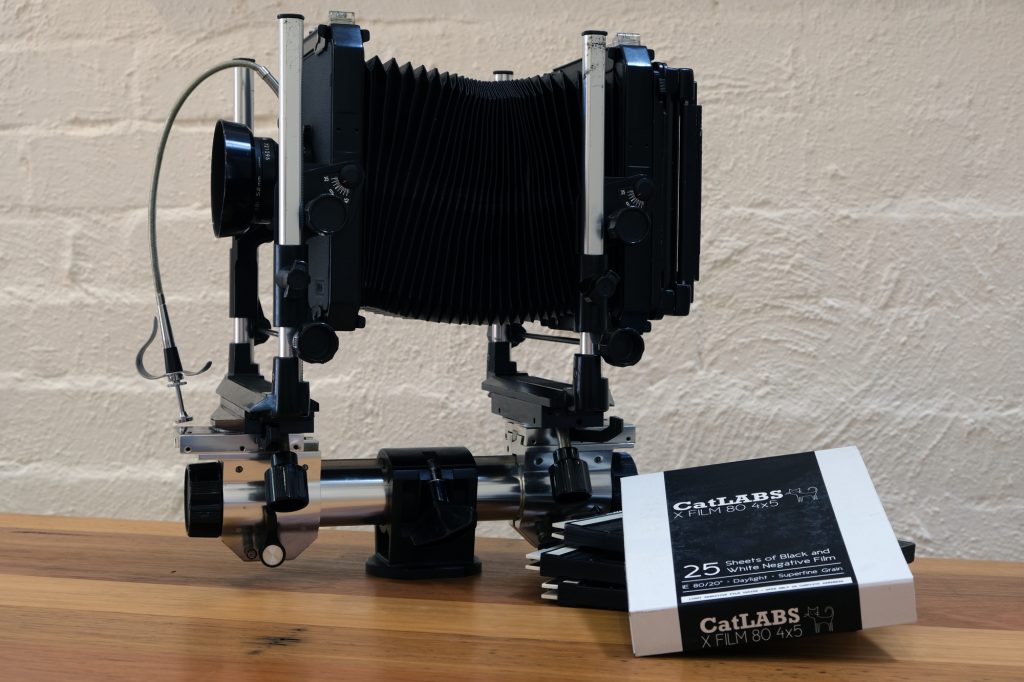
All photographs by David Tatnall.




As alway David – carefully reviewed Many thanks for keeping us all well in tune with what is happening out there
Thank you very much Ellie.
Will my photos be as good as yours if I buy this film? 😉
Very helpful review, thanks. I will have to give it a try.
Thanks very much, can’t be sure if your photographs will look like mine! But it’s a good film and well worth while trying.
How can I subscribe to your magazine, David T. ?
Alan Hershman
Dallas, Oregon
USA
Alan, This View Camera Australia site is free to view.
I wonder if the manufacturer could be convinced to produce 220. After all, GP3 is produced in 220, so they’ve got the gear set up and running. Whereas ILFORD say it would cost too much to repair/refurbish or replace their 220 system.
Thank you for the review, David.
Great Review David and thanks for checking out so many developers.
Amazing how ID11 can compete so well against Pyrocat HD!
Looks like the claims for this film have been largely met which is commendable.
I think many people miss the tonality of Panatomic X so this film is a welcome addition!
But the big question is whether it offers tangible benefits over FP4 plus?